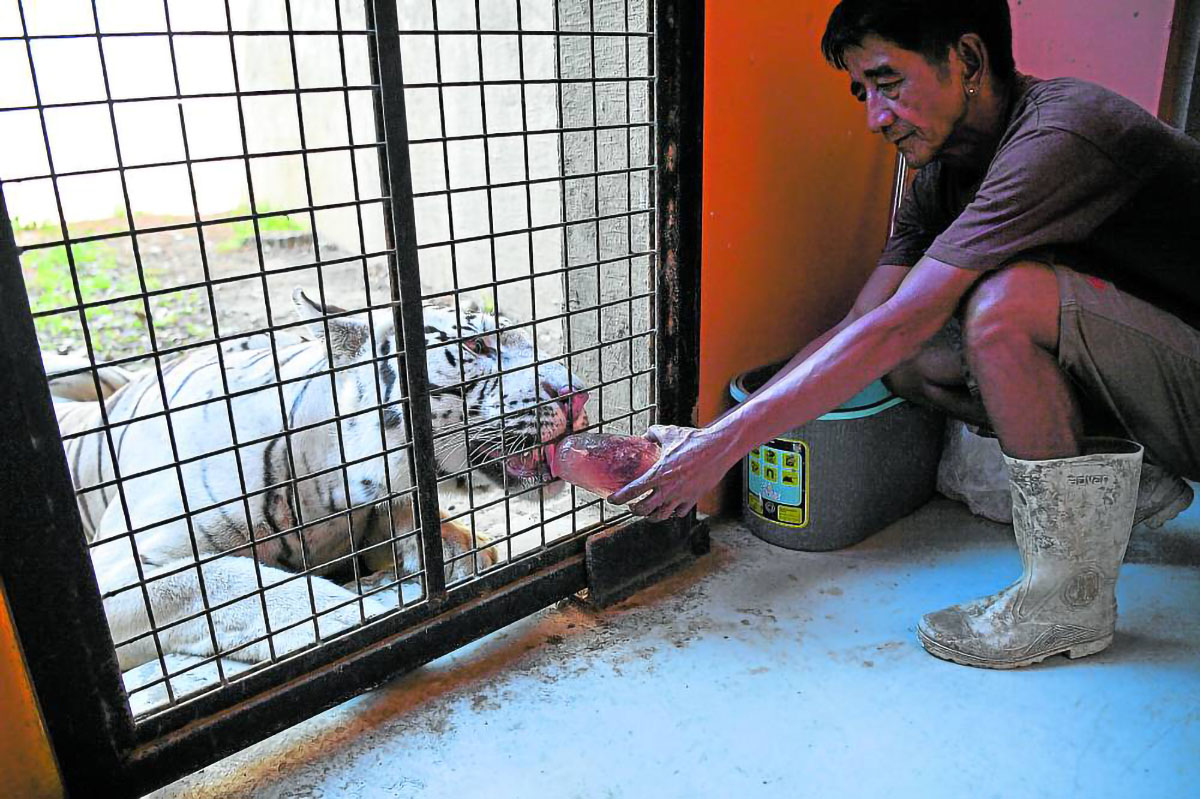
WELLNESS TREAT Amid the scorching heat, a worker feeds Wendell, a 5-year-old Bengal tiger, with “bloodsicle” inside its enclosure at the Manila Zoo on April 30. AGENCE FRANCE-PRESSE
MANILA, Philippines — A Philippine zoo is giving tigers frozen treats made of animal blood and preventing lions from mating during the hottest time of the day as a heatwave scorches the country.
Unusually hot weather has sent temperatures in Manila to a record high in recent days and forced schools across the archipelago to suspend in-person classes.
As people flock to air-conditioned shopping malls and swimming pools for relief from the extreme heat, animals at Manila Zoo are also trying to cool off.
READ: Philippines to endure extreme heat until mid-May
READ: Dagupan City to endure 49°C heat index on April 30
Preventing heat stroke, particularly among the big cats, was the “main priority,” zoo veterinarian Dave Vinas told Agence France-Presse (AFP) on Tuesday when the mercury hit 37 degrees Celsius in the city.
Water is splashed on the walls and ground of concrete enclosures throughout the day to help lower the temperature inside.
Too hot to mate
“Bloodsicles” made from frozen ground beef or chicken, animal blood and vitamins are given to the big cats to lick.
Tigers and lions are also regularly sprayed with water and take dips in pools inside their pens.
Wendell, a 5-year-old Bengal tiger weighing almost 400 kilograms, pants nonstop as he soaks for hours in a shallow pool.
“Like the tiny cats we have at home, they need to sleep at least 12 to 16 hours a day. But at this time, since it’s really hot, they are swimming to relieve the heat from the body,” Vinas said.
Gab, a lioness, looks bored as she sits on an elevated concrete platform after zoo keepers lock her male companion, Diego, in another pen to prevent them from mating at the hottest part of the day.
“We don’t want to expose them to the mating part in this heat,” Vinas said. “We don’t want to trigger any heat stroke.”
Water is also poured over the enclosures housing snakes and turtles to help regulate their body temperature.
While icicles and baths were normal during the hotter months of March, April, and May, Vinas said this year’s heat was the most intense he had experienced.
“Even if they get good ventilation, the temperature every year gets worse and worse,” he told AFP.
“We just find ways to make it better for the animals.”